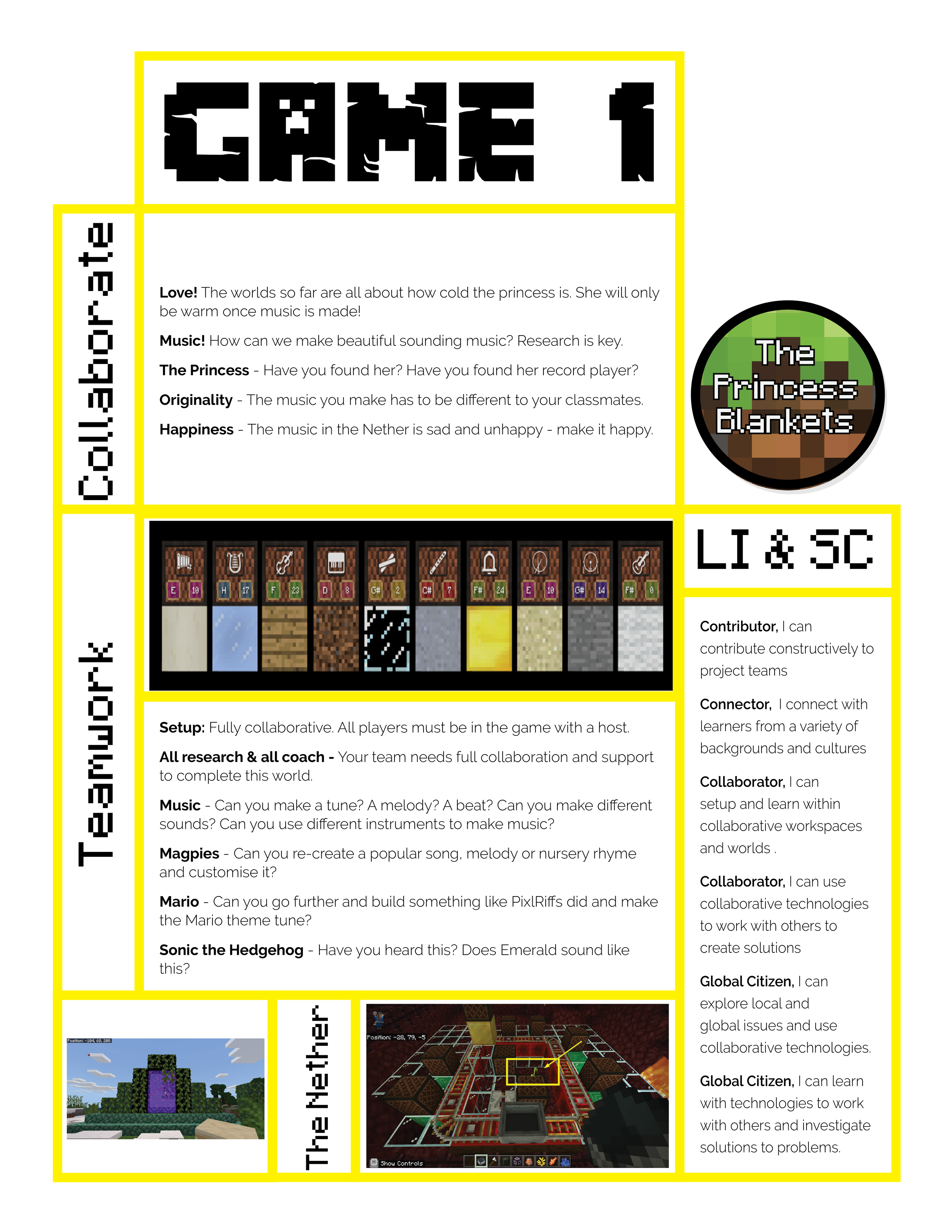As part of a Microsoft School Showcase on Minecraft, I thought I would compliment this visit, the hard work the Microsoft team put into producing the video with a resources share for teachers who wish to use my planning pack.
The pack is here. Inside you will find a 6-9 week pack containing:
3D Models of the items in the world. The musical notes especially.
Student PowerPoints (Google Slides), PNG, PDF versions and the editable InDesign files too.
Game Cards for each lesson outlining Learning Intentions and Success Criteria for students to be successful collaborators.
All worlds and an all-in-one world based on Litcraft’s Treasure Island map from Lancashire University
Teacher Guide for each lesson including all text for sign posts, blackboards and posters in Docx and PDF (below)
Quest clues in picture format for student support as well as the walkthrough-type videos below.
Image pack for further class resources.
This article is a free resource for teachers to use based on the story ‘The Princess Blankets’ by Carol Ann Duffy. Although, you could easily make this up yourself based on the information in the teacher pack. The story and outline is flexible enough to play without the book as there is a quest book in every Game with a score system that can be edited to suit the class/ school.
So what is the main thrust of this series? To enhance teamwork to a very high standard in Year 6 children and to get there through a series of collaborative challeneges and enventually produce a collaborative digital product. In this case, a musical rendition of a nurdery rhyme (or any familar tune) with the Noteblocks in Minecraft. See this example of lesson 1-2 the introduction game card.
The game worlds are a weird and deliberately creative place with many side missions along the way.
Before you begin, you need to get a key.
The key is a number. Normally, you would follow all games in the right order, such as: 1, 2, 3, 4, 5. But the order for the game order is very different and you need to use Google to get the data from a strange image.
How can you image search for this toy trainset? All the numerical data you need to open the order of the games in our world is in the search results.
What is the order? Is it 54321? or 43152?
As a team, once you have the correct order, write them into your game pages or on your table to take a photograph of.
How can we find the numbers out of this toy train?
Reverse image search in Googles drag and drop or use tineye.com and the students find the key to the number/ game sequence.
Why do this? The chilldren need a team plan and to work together to find the key and creates the mindset of discovery, search and collaborating on a simple search technique few wil have encountered. It also creates a barrier to entry thayt says ‘ you need to play like this to succeed’.
Below is a sample of a lesson game card for Game 1, Lesson 5.








